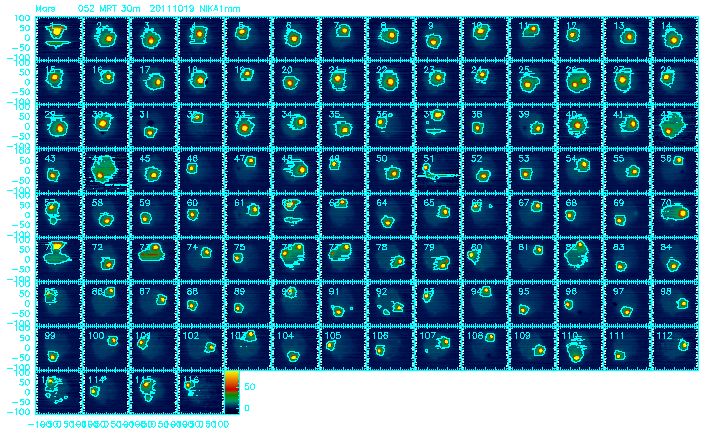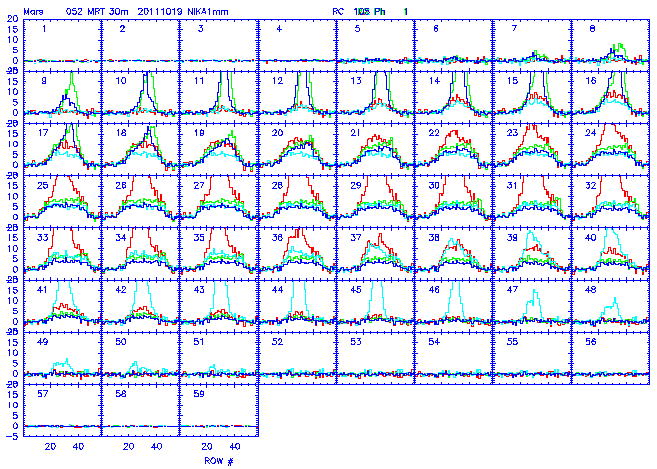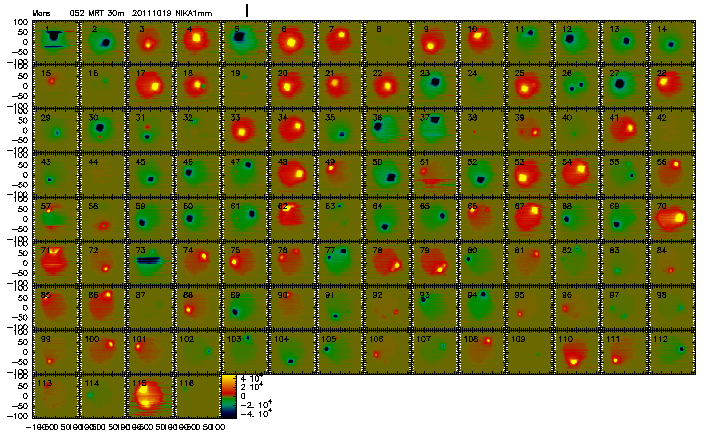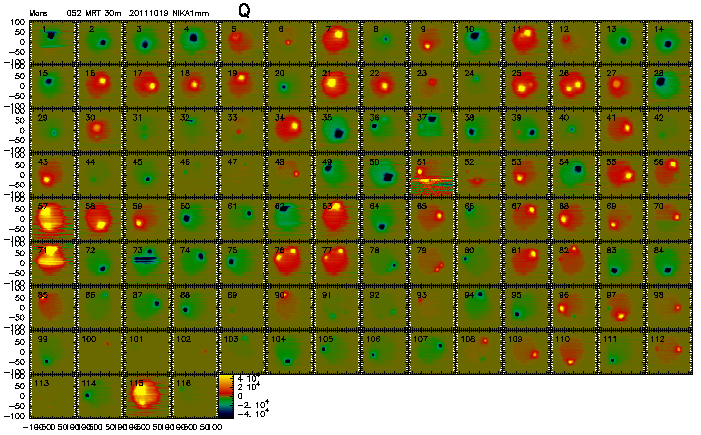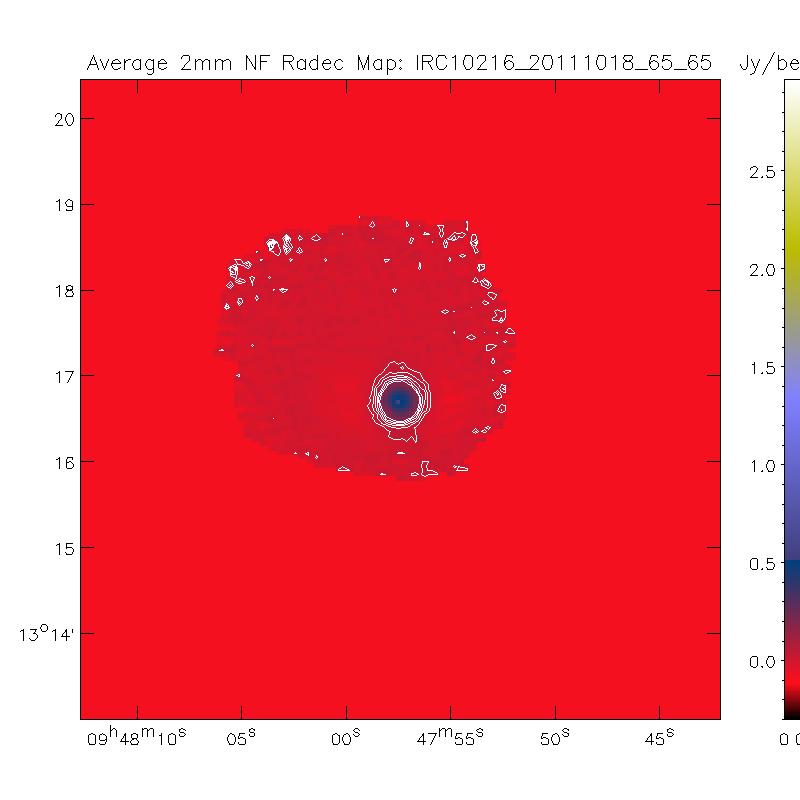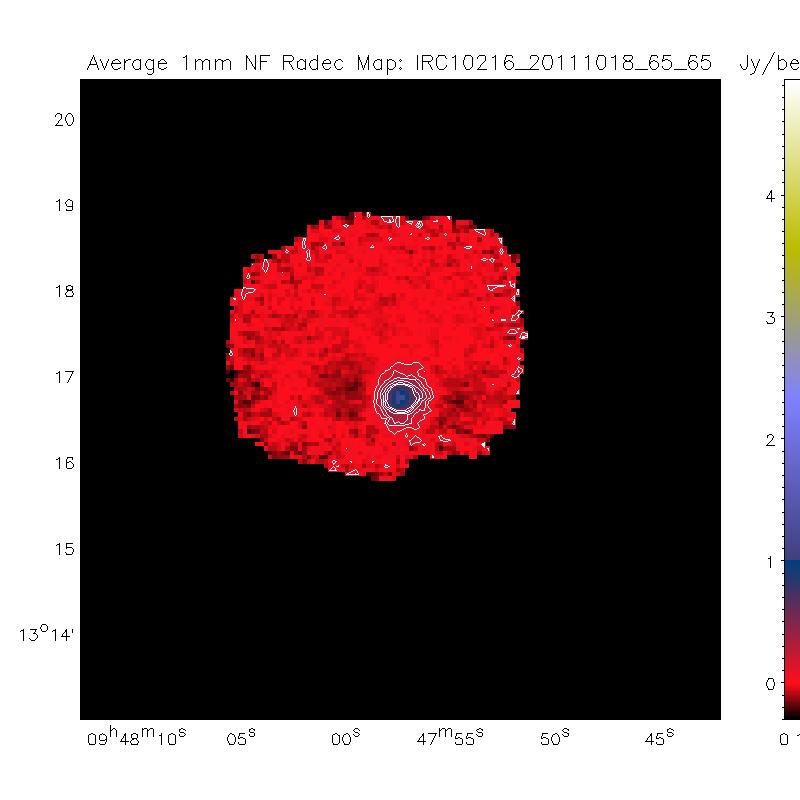|
Size: 8574
Comment:
|
Size: 8692
Comment:
|
| Deletions are marked like this. | Additions are marked like this. |
| Line 121: | Line 121: |
| {{attachment:NIKA1mm-20111019s52_ph1.png | plateau in I}} {{attachment:NIKA1mm-20111019s52_ph2.png | plateau in Q}} |
NIKA3 Offline Processing Results
2011 October run
=Private results for the collaboration only=
Public results
List of offline processing tasks
FXD, 24 Oct 2011 - Photometric quality
Here are the maps obtained on one OTF scan with IRC 10216. Sky noise decorrelation is used.
|
|
The flux per kid is shown here using the calibration on Mars Scan #55. This is an indication that the new camera with its dIdQ modulation scheme provides a big photometric improvement with respect to 2010 campaign. The average flux is compatible with the range of fluxes measured on this (variable) source.
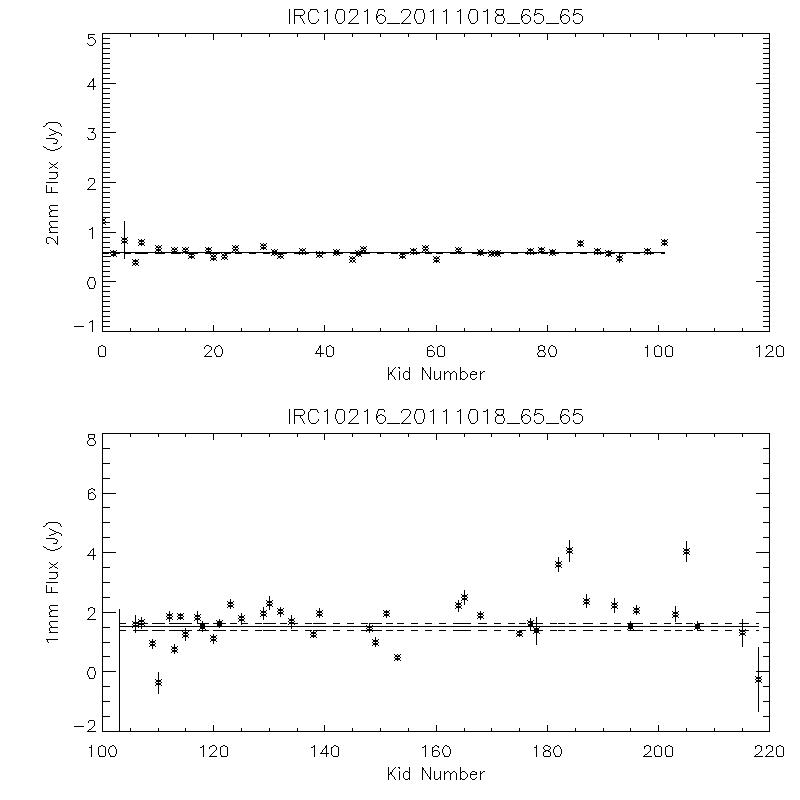
RZ, 25 Nov 2011 - Pointing & focus effects
To derive the source positions I used the pointing maps available in the IRAM Multi Beam FITS (IMBFits) format. However, currently over 20% of the pointing are missing. The statistics shown below is therefore represantative but by far not complete.
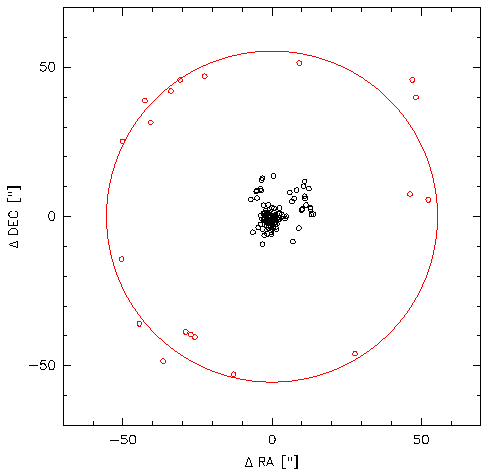
Source positions in the eq offsets. Positions of planets are not shown. In red are shown positions of sources used for the pointing model, in black after the installation of the pointing model. The pointing run was apparently performed with Nasmyth offsets of EMIR ! The pointing offsets after the installation of the pointing model are still very large, even 3-5 times larger than the normal values.
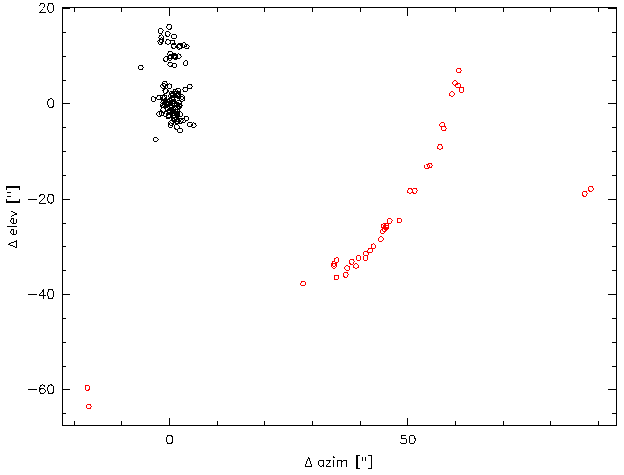
As above in the hor system; positions of planets are also shown.
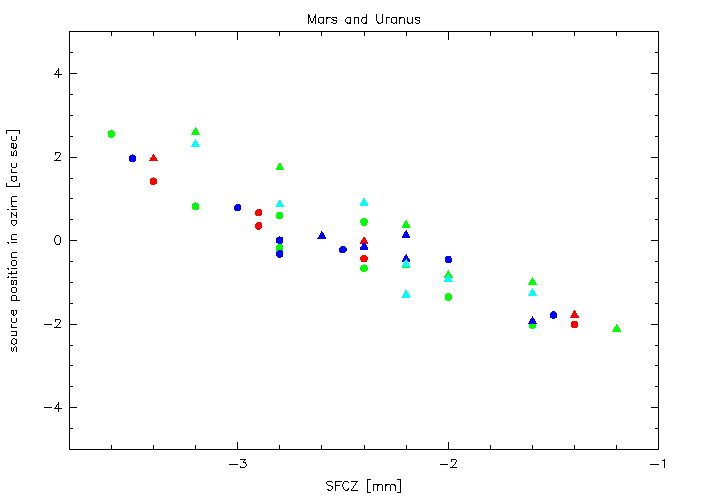
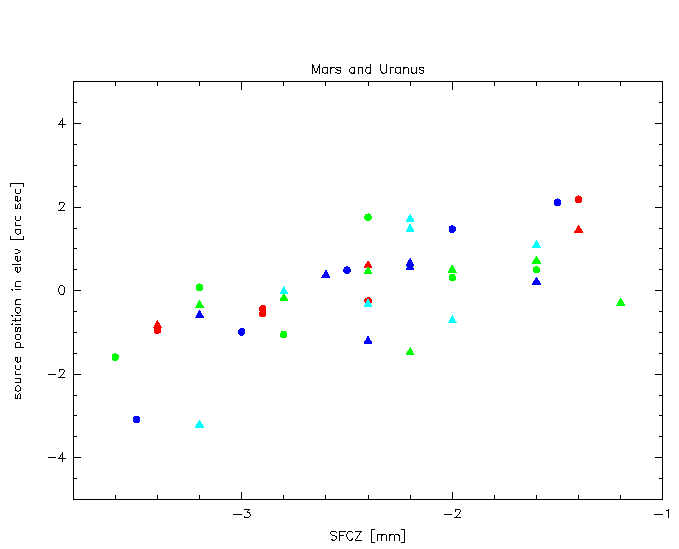
Effekt of defocusing: the source moves by a couple of arcsec in azim & elev. Note the larger scatter of the elev-positions.
Both, the pointings and foci were done by mapping. However, to correctly process maps the correct beam parameters, i.e. the pixel positions and their flat field are mandatory. The effective FoV geometry, the flat field and their errors will come next.
SL, 07 Nov 2011 - Expected field distortion
FXD, 21 Nov 2011 - Technical note on kid frequencies
FXD, 24 Nov 2011 updated v2 (Fits format exchange)
AM,MC 24 Nov 2011 Spectral transmissions
![]()
SL, 30 Nov 2011 - Calibration sources with PdB flux references
MC 24 Nov 2011 RF calculation on Mars
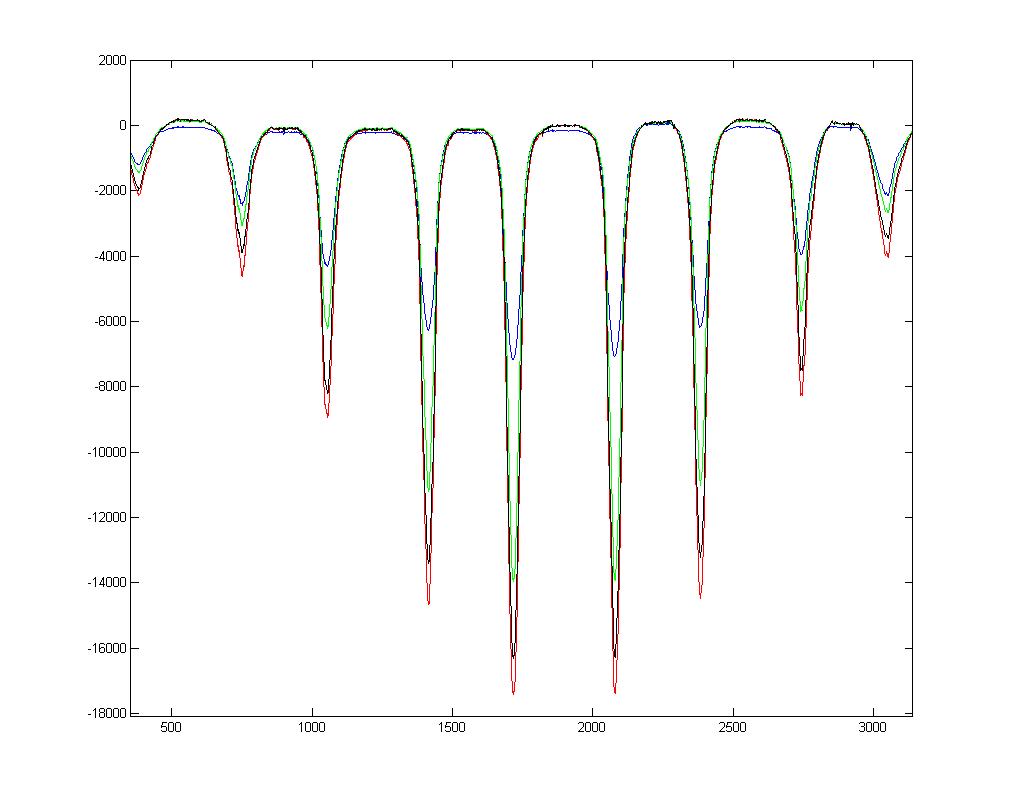
Blue line is the RFdIdQ as calculated in the standard way. Red, green and black are the results obtained using a 2-d polinomial fit of grade 2, 3 and 4 respectively.
MC 24 Nov 2011 dIdQ modulation on strong sources
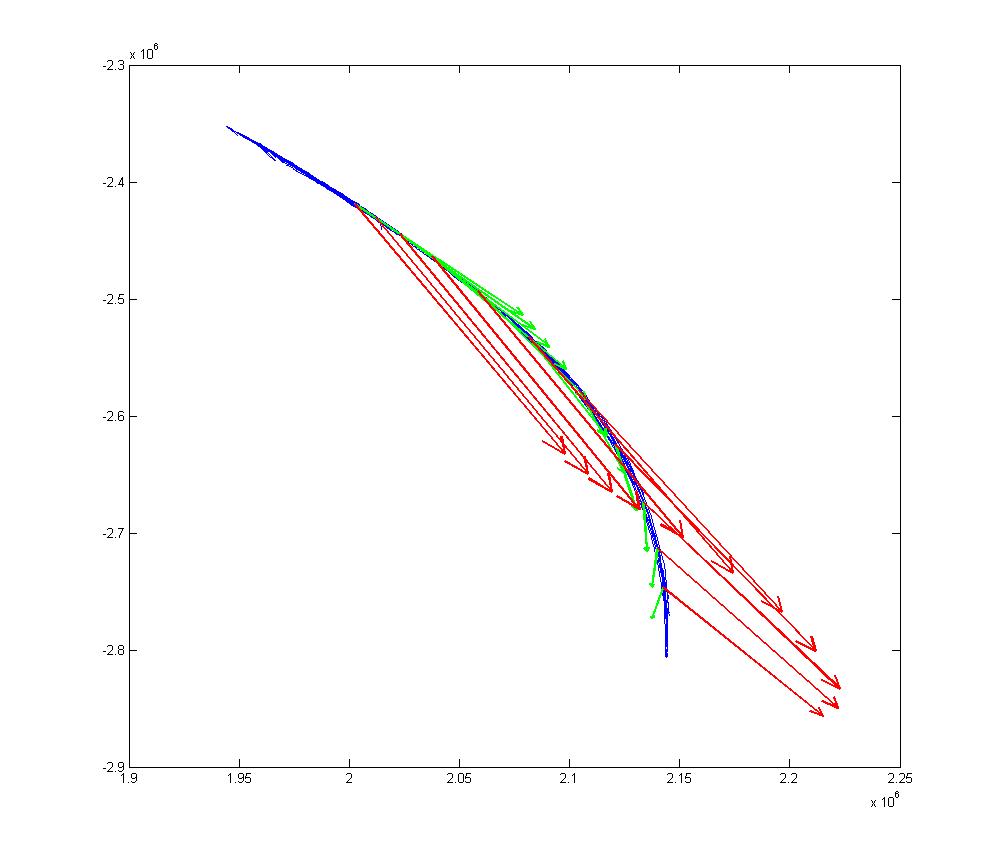
The blue line is the trajectory on the IQ plane when observing mars (approx 7kHz signal). The red line is the observed DeltaI, DeltaQ, averaged on 100 points (please do not consider it. It doesn't have a lot of sense. I'll update.). Interesting are the green arrows, whiwh are the dI dQ obtained by the LO modulation: near the peak of the source, where we get far from the resonances, they get farther from the tangent of the IQ trajectory... to be investigated!
RZ, 30 Nov 2011 - Beam maps
To determine the pixel positions, the effective beam shapes and the flat field I used 9 Mars maps observed from Oct 17 to 22. Maps observed later on are of too bad quality. I could use sources weaker than Mars (Uranus, Neptune, ...) with sky noise filtering to determine the pixel positions & beams, but without the line-of-sight tau-corrections not to calculate the flat field. The pixels which show a clear cross-talk within the main beam were excluded.
FoV geometry
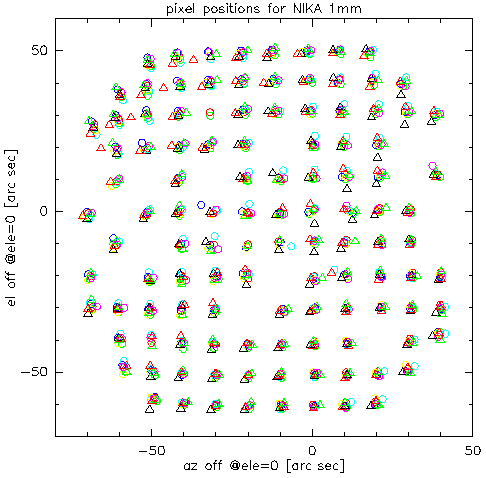
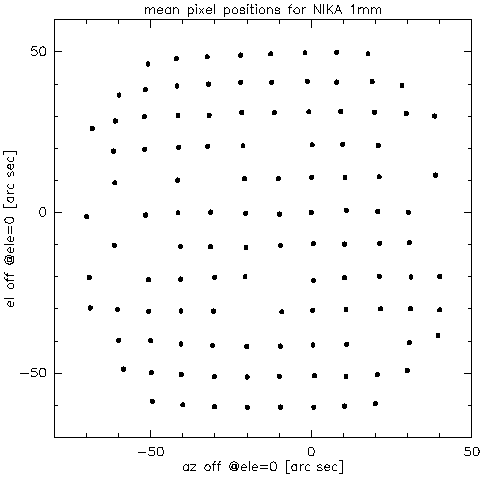
The figure above left (scatter of pixel positions) shows the derived pixel positions in each of the maps. Different markers and colors correspond to different maps. The scatter of the positions is larger in the centre and in the upper(left) part of NIKA, i.e this cannot be an atmospheric effect (anomalous refraction). For the few examples I checked, the changed positions were due to a cross-talk. The resulting average pixel positions are shown above right (fig. average FoV 1mm).
Centre of Nasmyth rotation
One very important point cannot be properly checked using the available data: the centre of the Nasmyth rotation. This centre is defined by the rotation axis of the mirror M3, but its determination depends also on the pointing behaviour. The ultimate proof would be if all the usable pixels would always show the source at one position, i.e. independent of the elevation and azimut. For all coordinate transformations I had to assume this centre is close to pixel #21 (22 in my plots), as given by FXD.
Flat field
The correct flat field should be calculated for the main beams. However, because of the beam broadening (see below) I could use just the peak fluxes, i.e. a flat field valid only for on-offs observed with not filled receiver arrays like MAMBO, LABOCA or SCUBA. Currently I also did not use any extinction corrections. The average flat field shown below is therefore just indicative.
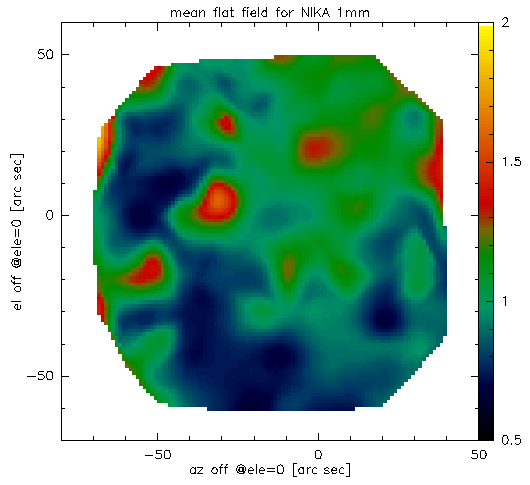
Beam broadening
Strange beam broadening is visible both at 1 and 2mm. Two examples for Mars and Neptune are shown below.
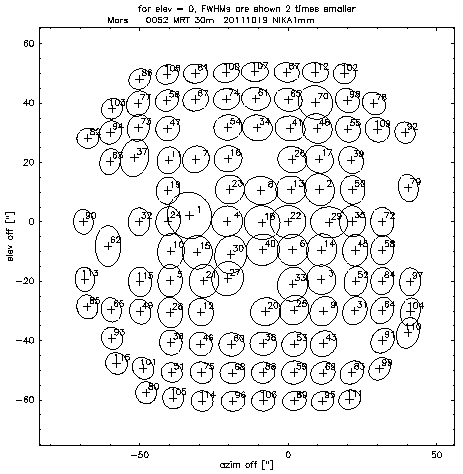
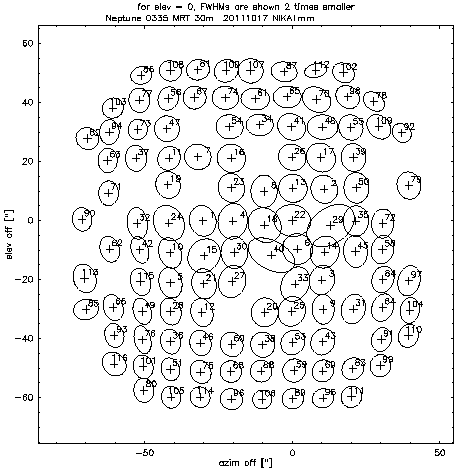
Note the larger and elliptical beams of pixels #29 and 40 for Neptune. This is an effect of the cross-talk.
The beam broadening is visible also in I & Q (below) and at 2mm (not shown).
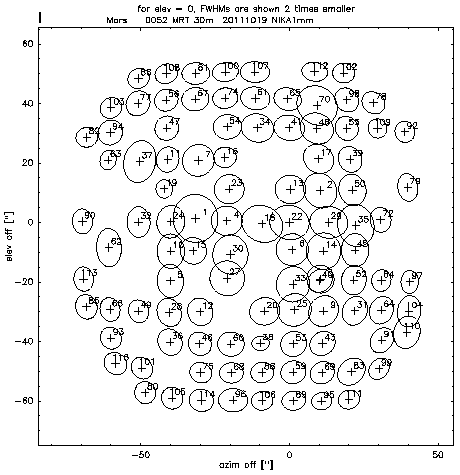
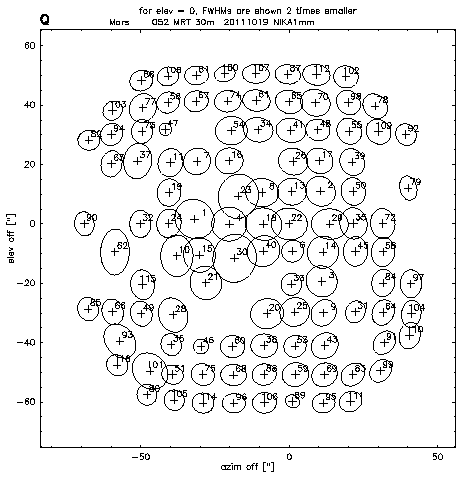
Below the beam sizes @1mm during run 2 are shown for comparison.

Average beam sizes
For pointing sources weaker than roughly Neptune the errors of individual beams are too large to allow the check of the beam change across the FoV. Only the average beam shape can be fitted with sufficient accuracy. The figure below shows the major (triangles) and minor (circles) FWHM for all pointing sources available in the IMBFits format. There is a clear change of the observed beam size after the pointing run, but within the errors no dependence on the source flux. The reason for the smaller FWHM during the pointing run is not clear to me. A kind of a "comet"-effect due to a bad tracking of the sources seems to be not sufficient (recall: the pointing run was performed with Nasmyth offsets of EMIR). However, as SL pointed, it was discovered on 18th that the mirror M7 was moved. The change of the FWHM corresponds to the re-adjustement of M7. Is this just a coincidence or the explanation for the changed average FWHM ?
The change of the FWHM across the FoV is definitely not related to the M7 problem - it was present before and after the re-adjustment of M7.
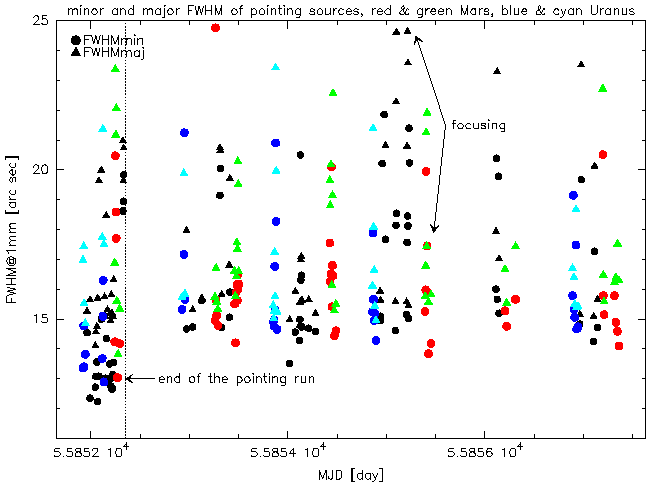
Origin of the large pointing errors
All the errors and effects shown above: scatter of the pixel positions, effect of the focus, imperfect pointing model a.s.o., cannot explain the very large (>10arcsec) pointing offsets. There must be still another problem I could not identify.
RZ, 1 Dec 2011 - The ''plateau''
